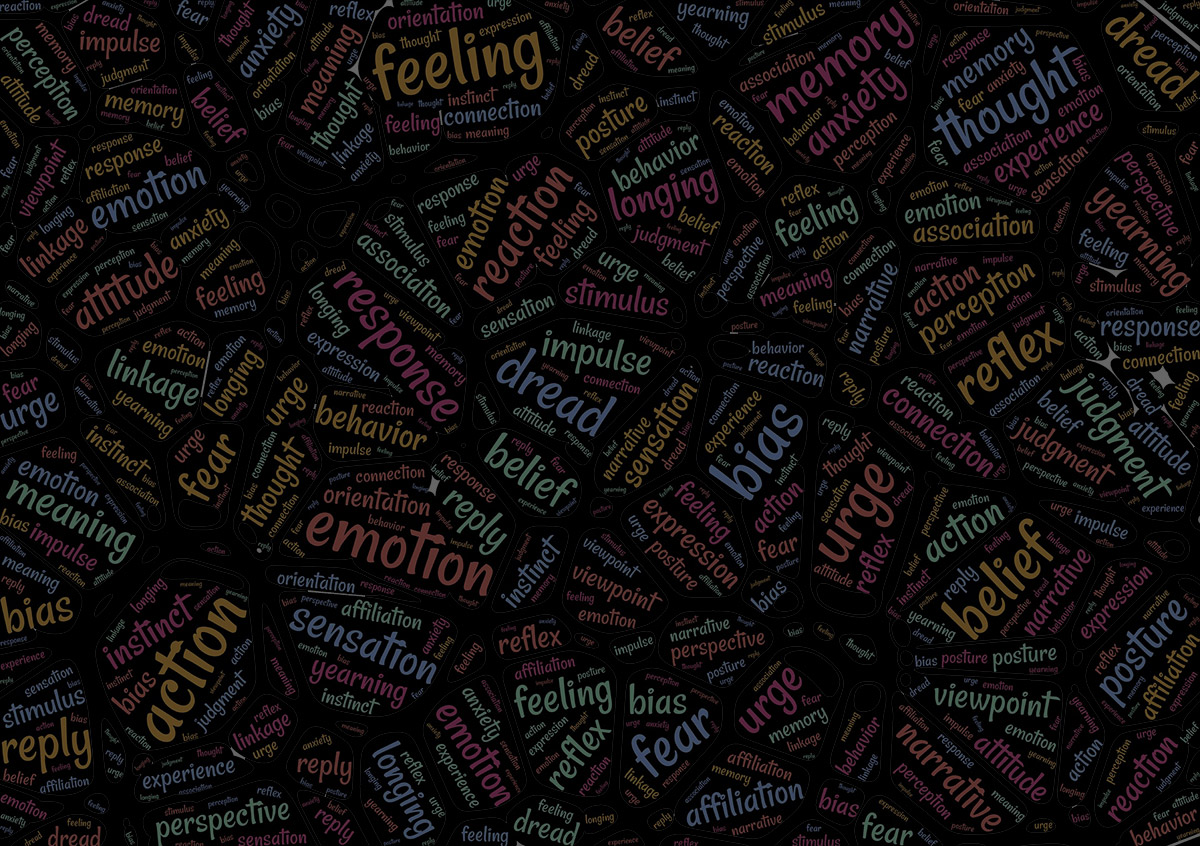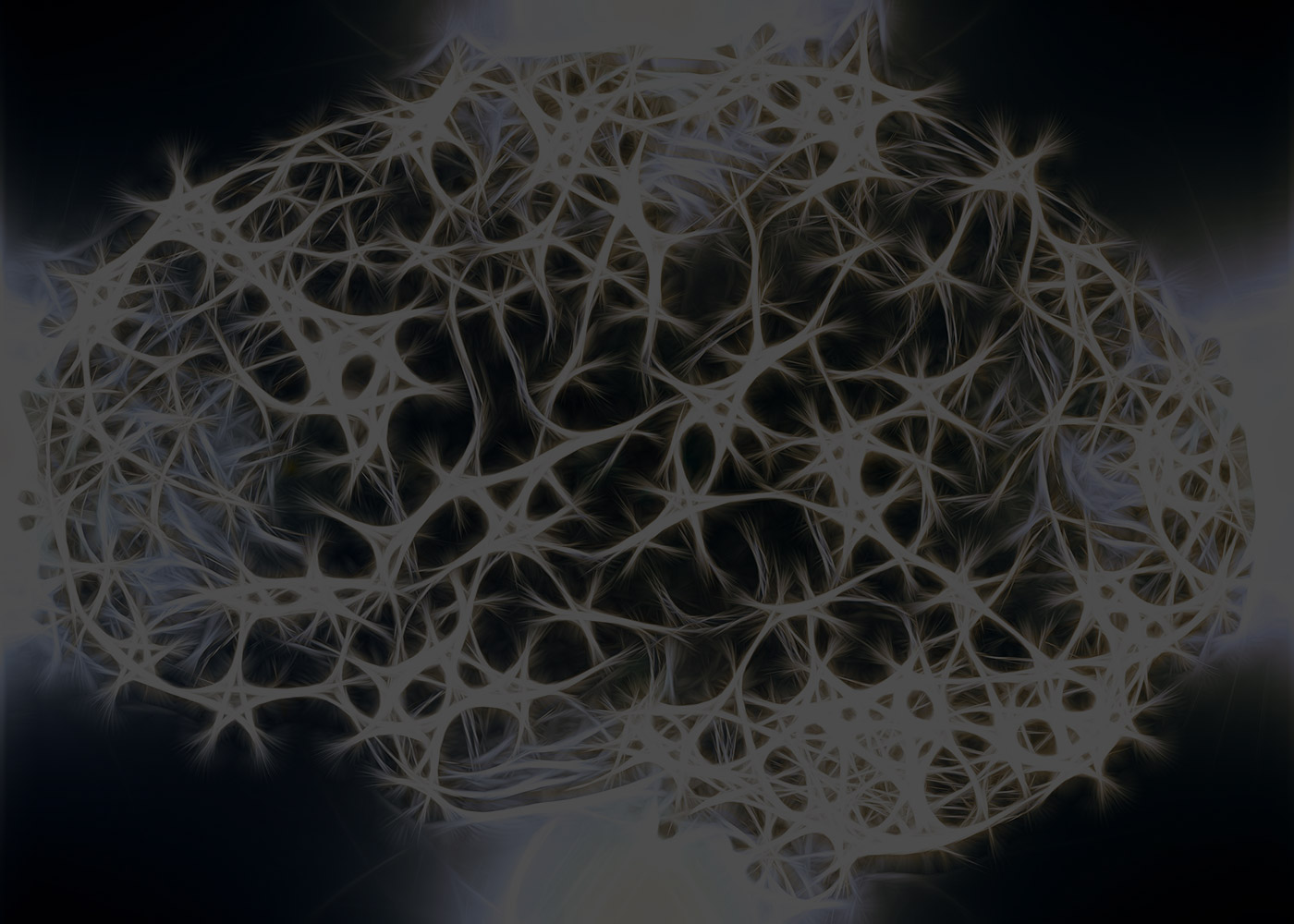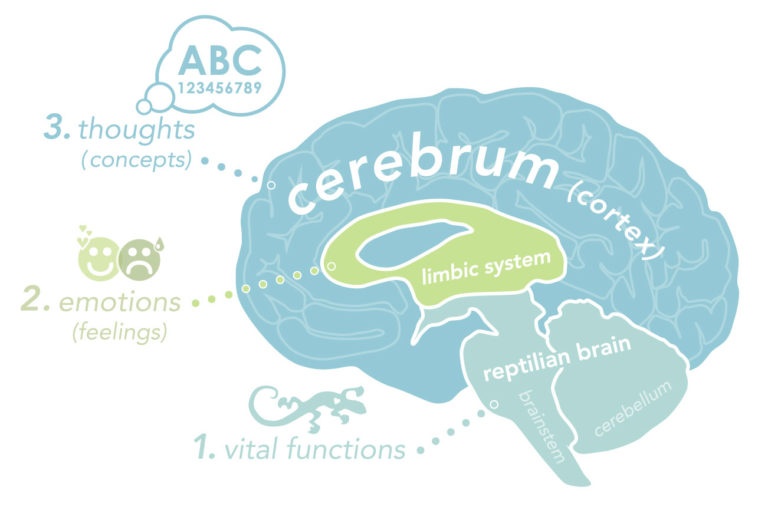
Physiology of Emotions & thoughts
Thoughts and emotions are expressions of the electric and chemical processes of human physiology in and between the nerve cells of the brain and nervous system.
What is psychological (psyche = mind, soul) is also biological. That's why it's crucial to take a look at the physiological (physio = physical, bodily) basis of the mind to understand how consciousness expresses itself through the human body.
DIVISIONS OF THE NERVOUS SYSTEM
Human consciousness (emotions, feelings, thoughts) expresses itself through the nervous system. In fact, our whole conscious experiences sits in the nervous system which consists of nerve cells. Nerve cells are the units that make up the nervous system. The nervous system makes our body consciously perceive, feel and actively respond to the world around us. It is a complex system consisting of two main parts: a sensory and motor division.
1. Sensory division
The sensory part of the nervous system consists of nerve cells that sense the outside world. They react to impulses from without and transform those into electric signals via specialised organs: skin and inner organs react to mechanical pressure (touch), eyes react to light, ears react to air vibrations, nose reacts to air molecules, and tongue reacts to tastes. The 5 senses gather information from the environment and transform them into physiological signals (electricity and chemistry) that run along the nerves for further processing in the spinal cord and the brain.
2. Motor division
The motor division of the nervous system consists of nerve cells which receive signals back from the brain and spinal cord to cause a mechanical or chemical effect in targeted organs. Such examples could be muscle contraction or relaxation, increase or decrease of heart rate, release or reduction of hormones in blood etc. This part of the nervous system makes the body move and processes the orders from the brain and the spinal cord.
The motor division itself consists of further two sub-branches: somatic and autonomic divisions.
2.1. Somatic Division
The somatic system consists of motor nerves that control our muscles and glands and which yield to our voluntary action. It is the part of human physiology that makes us move our limbs and perform various kinds of conscious actions with our bodies. It obeys our self-determined control.
2.2. Autonomic division
The autonomic system performs various vital functions which are outside our conscious control, but necessary for the survival of the body, such as heart-beat, breathing, digestion etc. These actions are unconscious and involuntary, but they are crucial for sustaining the vitality of the body. They are so important that they function automatically without our attention directing them. The autonomic nervous system keeps us alive, leaving it to the somatic system to make the conscious decisions in our daily lives.
Nerve Cells as basis of physiology
The units of the nervous system are the nerve cells. They receive impulses and forward them as electrical currents along the body. The nerve cells, although interconnected, don’t really touch each other. Instead, they are separated by small gaps which contain many little vesicle sacks filled with molecules of certain types. These molecules are called neurotransmitters, and there’s many different kinds, depending on their structure and the task they perform. All processes of the organism that pertain to consciousness (inner experience) are a result of the movement of the electric and chemical currents through or between the nerves.

Central system: spinal cord & brain
Any information coming in from the senses via nerve cells reaches the central nervous system which consists of the spinal cord and the brain. They process the information by integrating them into the existing nervous structures.
The spinal cord controls automatic movements which aim at protecting the body from danger. When a hand touches a hot herd, the muscles withdraw the hand immediately to protect the hand from burning before the brain even realises what is happening. The spinal cord recognises the danger while the impulse is still on the way to the brain and sends a signal back to the hand to withdraw, while the brain is still decoding the signal. The spinal cord is the cause for all the reflexes that help our body protect itself from dangerous situations.
The brain is the centre controlling and managing the activities of the organs via nerve cells. Electric and chemical signals as well as hormonal molecules in glands and blood are the carriers of any information. For anything to become part of consciousness it must pass through the nervous system into the brain. It is in the higher regions of the brain where conscious experience arises.
It's easy to understand the different parts of the brain by dividing it into three major parts.
We don't use only 10% of the brain. Even simple tasks make nearly every brain region lighten up. The brain requires 20% of the body’s energy.
3 parts of the brain physiology
1. Reptilian Brain: reflexes & instincts
Human capabilities derive from brain structures that developed from older parts of the brain that can be found in primitive animals such as reptiles. Reptiles have brains responsible for survival functions, such as eating, breathing, resting etc. That brain is the inner core anchored by the brain stem. The functions here happen automatically and without any conscious effort. The thalamus of the reptilian brain takes in sensory information related to seeing, hearing, touching and tasting. There are also parts responsible for arousal such as sleeping and walking, pain, non-verbal learning, memory and coordination of movements.
2. Limbic System: emotions & feelings
More complex brain structures let higher animals anticipate, learn, remember and, above all, feel. This higher part of the brain is the limbic system which evolved around the older brain structures. Limbic system consists of various parts out of which the amygdala is the most prominent one. This system's main function is to experience emotions. Whatever passes through the limbic system is tinted with an emotion or feeling.
3. Cerebrum (cortex): reason & logic
The most advanced part of our brain, the grey matter, is what makes us human. It makes up 85% of the brain weight and provides us with the ability to speak, think, learn, remember and perceive the way humans do. It is divided into the left and right hemispheres. In the cerebral cortex covering both hemispheres you find association areas which deal with interpreting and integrating sensory input and linking it with memories.
From the evolutionary point of view the oldest parts of the brain physiology are at the bottom and back of the head (reptilian brain) which altogether regulate the vital functions and processes which don’t require our conscious attention and thinking.

The youngest portion of the brain physiology is the cortex (cerebrum) which makes us into human beings. This is the place where the conscious processes of thinking, learning, planning, comprehension, language, concentration and self-consciousness take place, i.e. all the mental activities typical of us humans.
Integration of physiological information
All information about the environment flows from the senses to the spinal cord and the brain where the information is integrated into the internal structure. All the nerves are interconnected with each other building vast networks along which electric and chemical signals can flow. The nervous system re-wires itself constantly as it learns based on conscious and unconscious experience. In this way the release of certain molecules can be strengthened or inhibited which is the cause of establishing and overcoming of habits.
Every information from the environment needs to be integrated into the brain, which represents the mental structure of our consciousness. Loose data has no meaning for us, unless it relates to other bits of information in our brain.
This connecting of information to other pieces of information in the nerve cells is the process of association, upon which all thinking and perception is based. We comprehend and understand the world around us because our inner mental structure (networks of nerve cells in the brain) can establish connections between various bits of information. In this way we know what we are, what is happening and how things work.
In a nutshell
Our inner experience is a manifestation of complex electrical and chemical molecules flowing in and between the nervous cells. The structure of those nervous connections defines the quality of the experience that they deliver to our consciousness.



